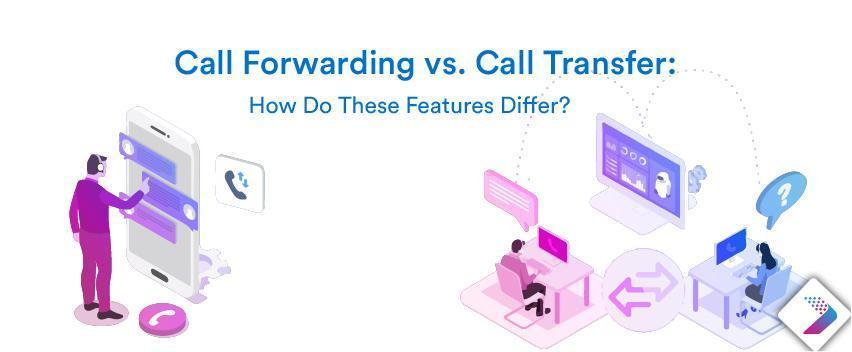Computer telephony integration in other business tools like CRM systems has become common. The major business solutions also provide telephony features incorporated into the software to enhance business communication. Some features like call forwarding, call transfer, etc. are available in multiple communication solutions such as IP PBX solutions, call center solutions, etc. The companies that offer VoIP development services can help you develop these features for your software.
Both call forwarding and call transfer are two different features and are often misunderstood or incorrectly used by people.
What is Call Forwarding?
It is a telephony feature that forwards an incoming call to another phone number or extension. The caller will not get any intimation or acknowledgment about this forwarding, it will be done
automatically.
What is a Call Transfer?
This telephony feature will connect the caller to the agent at another end. The agent will transfer the call to another agent or supervisor in the company.
The call transfer has two types:
1. Blind call transfer and
2. Attended call transfer
Call Forwarding vs. Call Transfer

These are telephony features available in multiple communication solutions, including a multi tenant IP PBX solution. Let’s understand the difference between both of these solutions in detail.
⦿ The VoIP development company can develop a call forwarding feature that can be used before a caller is connected to the agent or even during a live call.
⦿ The call transfer feature is differently developed by the VoIP software development companies. It will require a caller to connect on a live call with the agent to allow them to use the transfer feature.
⦿ Call forwarding can have another feature called Find Me, Follow Me. This feature will forward an incoming call to more than one phone number in a sequential manner until it is attended or the total numbers added to the system get exhausted and nobody responds to the call.
⦿ VoIP development services include the development of two different types of call transfer features. Attended transfer, which is also referred to as warm transfer, will take an extra step before transferring the call to the next agent. It will first connect the caller, the agent that has attended the call originally, and the agent that needs to take it forward in a 3-way conference. This keeps another agent aware of the fact that he has to take the call. On the other hand, blind call transfer transfers the call directly to the next extension of the agent without giving any acknowledgment or intimation.
⦿ Call forwarding is often used in more professional scenarios such as handling premium clients.
⦿ Call transfer is often used to handle heavy call volume such as in call centers.
Concluding notes
VoIP software development companies build innovative features to meet the telephony and collaboration needs of businesses. Call forwarding and call transfer are basic yet vital features needed in businesses.
Are you looking for a VoIP development company that offers reliable VoIP development services? Contact us and we can discuss your requirements in detail.
